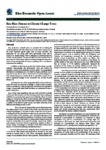Por favor, use este identificador para citar o enlazar este ítem:
http://www.alice.cnptia.embrapa.br/alice/handle/doc/1022268Registro completo de metadatos
| Campo DC | Valor | Lengua/Idioma |
|---|---|---|
| dc.contributor.author | BEVITORI, R. | pt_BR |
| dc.contributor.author | GHINI, R. | pt_BR |
| dc.date.accessioned | 2015-08-19T11:11:11Z | pt_BR |
| dc.date.available | 2015-08-19T11:11:11Z | pt_BR |
| dc.date.created | 2015-08-19 | pt_BR |
| dc.date.issued | 2014 | pt_BR |
| dc.identifier.citation | Rice Research, v. 3, n. 1, 2014. | pt_BR |
| dc.identifier.issn | 2375-4338 | pt_BR |
| dc.identifier.uri | http://www.alice.cnptia.embrapa.br/alice/handle/doc/1022268 | pt_BR |
| dc.description | Rice production currently plays an essential role in feeding the world?s population and will continue to be in the future, because rice is the most important global staple food in many countries. The production of rice, along with other agricultural crops, will be impacted by climate change. There is still great uncertainty about how climatic and atmospheric changes will affect the future productivity of food crops. Major future impacts of climate change are expected on food security and agricultural incomes, including shifts in production areas across the world. | pt_BR |
| dc.language.iso | eng | eng |
| dc.rights | openAccess | eng |
| dc.title | Rice blast disease in climate change times. | pt_BR |
| dc.type | Artigo de periódico | pt_BR |
| dc.date.updated | 2015-09-01T11:11:11Z | pt_BR |
| dc.subject.thesagro | Arroz | pt_BR |
| dc.subject.thesagro | Oryza sativa | pt_BR |
| dc.subject.thesagro | Doença de planta | pt_BR |
| dc.subject.thesagro | Clima | pt_BR |
| dc.subject.nalthesaurus | Rice | pt_BR |
| dc.subject.nalthesaurus | Blast disease | pt_BR |
| dc.subject.nalthesaurus | Climate change | pt_BR |
| riaa.ainfo.id | 1022268 | pt_BR |
| riaa.ainfo.lastupdate | 2015-09-01 | pt_BR |
| dc.identifier.doi | 10.4172/2375-4338.1000e111 | pt_BR |
| dc.contributor.institution | ROSANGELA BEVITORI, CNPAF; RAQUEL GHINI, CNPMA. | pt_BR |
| Aparece en las colecciones: | Artigo em periódico indexado (CNPAF)  | |
Ficheros en este ítem:
| Fichero | Descripción | Tamaño | Formato | |
|---|---|---|---|---|
| jriceres.pdf | 218.4 kB | Adobe PDF |  Visualizar/Abrir |









